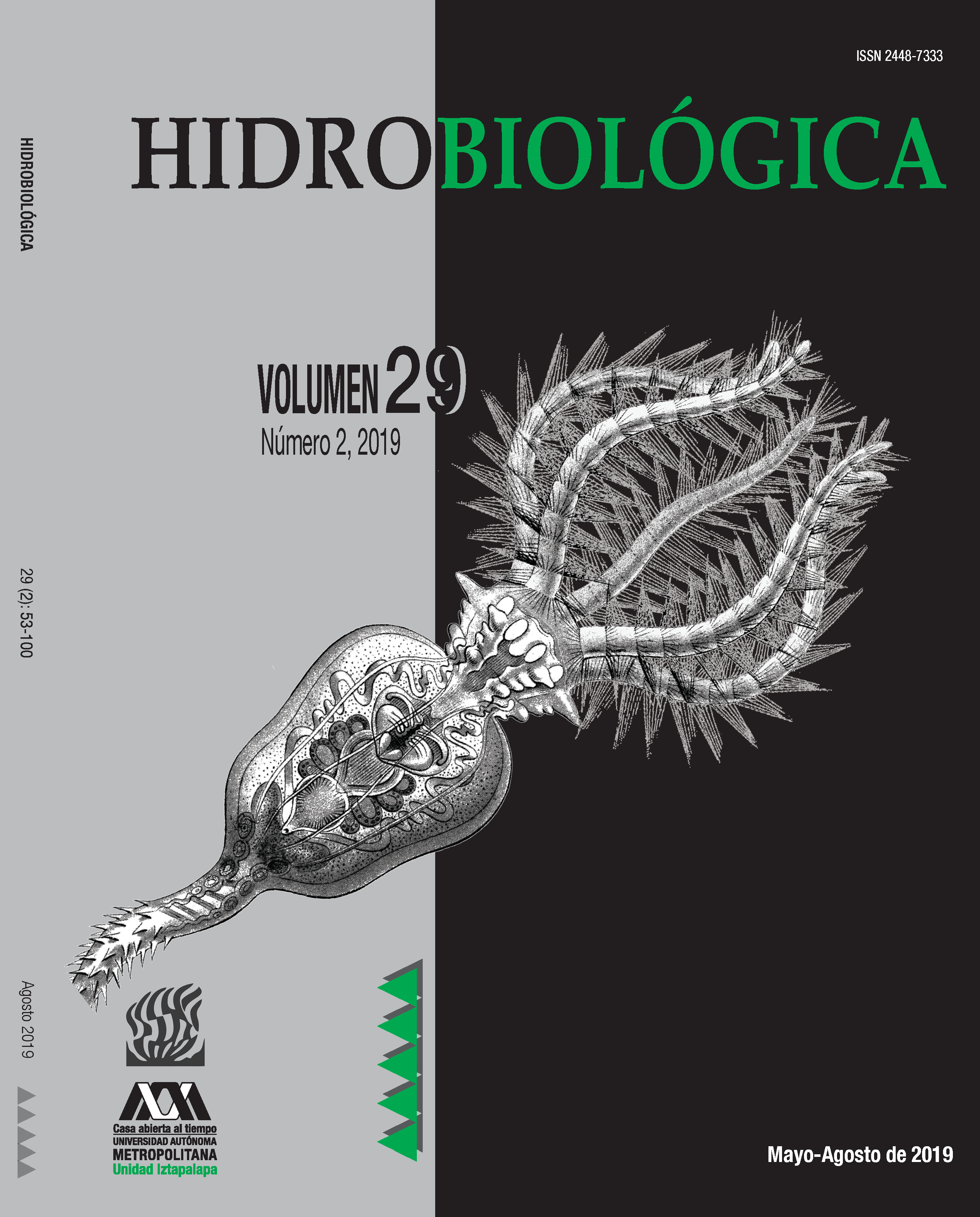Second report of the chimaera Harriotta raleighana (Chondrichthyes: Rhinochimaeridae) in Banderas Bay, Jalisco, Mexico
DOI:
https://doi.org/10.24275/uam/izt/dcbs/hidro/2019v29n2/MedinaKeywords:
chimaera, rare species, archibenthic, abyssalAbstract
Background: Chimaeras are cartilaginous fish that live in waters more than 200 m deep. There are two species of the genus Harriotta in the Rhinochimaaeridae Family, but only one, H. raleighana Goode & Bean 1895, occurs in Mexican waters. In almost one hundred years it has been collected only six times in the Mexican Pacific, and it is considered a rare and poorly known species. Goals: this note describes the last and most recent specimen collected in this region. Methods: in early 2018 a specimen was found in a fishing net in the south of Bahia de Banderas, Jalisco, and represents the second record in the area, the only place in Mexico with two records. Results: data and measurements are included. A female weighing 1.343 kg, with a total length of 85.5 cm, corresponding to the largest specimen ever collected in México. Digestive tract was empty. Conclusions: this is the second report for this species for Jalisco, particularly in Bahía de Banderas, the only place in Mexico with two records of this rare species.
Downloads
References
Dagit, D.D., R.H.L. Walls & E. Buscher. 2016. Harriotta raleighana. The IUCN Red List of Threatened Species 2016: e.T60140A3088899 dx.doi.org/10.2305/IUCN.UK.2016-1.RLTS.T60140A3088899.en
Del MoralFlores, L.F., J.J. Morrone, J. Alcocer Durand, H. EspinosaPérez, & G. PérezPonce De León. 2015. Lista patrón de los tiburones, rayas y quimeras (Chondrichthyes, Elasmobranchii, Holocephali) de México. Arxius de Miscel·lània Zoològica 13: 47-163. doi:10.15470/hrl1kv
Ebert, D.A. & M.F.W. Stehmann. 2013. Sharks, batoids and chimaeras of the North Atlantic. FAO Species Catalogue for Fisheries Purposes, Roma. 523 p.
Espinosa, H. 2003. La Colección Nacional de Peces, métodos y usos. TIP Revista Especializada en Ciencias Químico-Biológicas 6: 30-36.
Espinosa-Pérez, H. 2014. Biodiversidad de peces en México. Revista Mexicana de Biodiversidad, Suplemento 85: S450-S459.
Espinosa, P.H., L. Huidobro, C. Flores, P. Fuentes-Mata, & R. Funes. 2008. Catálogo de Autoridades Taxonómicas de los Peces de México. Base de datos del Sistema Nacional de Información de Biodiversidad. Comisión Nacional para el Conocimiento y Uso de la Biodiversidad. México, D.F.
Medina-Rosas, P. & A.R. Raymundo-Huizar. 2014. Primer registro del pez de aguas profundas Harriotta raleighana (Chondrichthyes: Rhinochimaeridae) en la costa de Jalisco, Pacífico mexicano. Revista Mexicana de Biodiversidad 85: 1277-1281.
Moncayo-Estrada, R., J.L. Castro-Aguirre & J. De La Cruz-Agu?ero. 2006. Lista sistemática de la ictiofauna de Bahía de Banderas, México. Revista Mexicana de Biodiversidad 77: 67-80.
Nelson, J.S., T.C. Grande & M.V.H. Wilson, 2006. Fishes of the world. John Wiley & Sons, New Jersey. 752 p.
Van der Heiden, A. 1985. Additional morphometric data on Harriotta raleighana (Holocephali: Rhinochimaeridae) and description of copulation marks. Revista de Biología Tropical 33: 185-187.
Weigmann, S. 2016. Annotated checklist of the living sharks, batoids and chimaeras (Chondrichthyes) of the world, with a focus on biogeographical diversity. Journal of Fish Biology 88: 837-1037.
Downloads
Published
How to Cite
Issue
Section
License
Los autores/as que publiquen en esta revista aceptan las siguientes condiciones:
De acuerdo con la legislación de derechos de autor, HIDROBIOLÓGICA reconoce y respeta el derecho moral de los autores, así como la titularidad del derecho patrimonial, el cual será cedido a la revista para su difusión en acceso abierto.
Publicar en la revista HIDROBIOLÓGICA tiene un costo de recuperación de $500 pesos mexicanos por página en blanco y negro (aproximadamente 29 dólares americanos) y $1000 pesos por página a color (aproximadamente 58 dólares americanos).
Todos los textos publicados por HIDROBIOLÓGICA sin excepción se distribuyen amparados bajo la licencia Creative Commons 4.0Atribución-No Comercial (CC BY-NC 4.0 Internacional), que permite a terceros utilizar lo publicado siempre que mencionen la autoría del trabajo y a la primera publicación en esta revista.
Los autores/as pueden realizar otros acuerdos contractuales independientes y adicionales para la distribución no exclusiva de la versión del artículo publicado en HIDROBIOLÓGICA (por ejemplo incluirlo en un repositorio institucional o publicarlo en un libro) siempre que indiquen claramente que el trabajo se publicó por primera vez en HIDROBIOLÓGICA.
Para todo lo anterior, el o los autor(es) deben remitir el formato de Carta-Cesión de la Propiedad de los Derechos de la primera publicación debidamente requisitado y firmado por el autor(es). Este formato se puede enviar por correo electrónico en archivo pdf al correo: enlacerebvistahidrobiológica@gmail.com; rehb@xanum.uam.mx (Carta-Cesión de Propiedad de Derechos de Autor).
Esta obra está bajo una licencia de Creative Commons Reconocimiento-No Comercial 4.0 Internacional.


